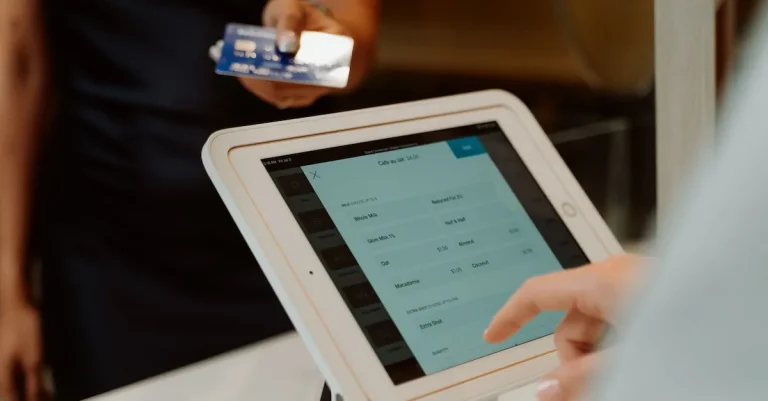How Much Is 40 Acres Of Land Worth In 2023?
Are you curious how much a 40-acre parcel of land costs in today’s market?
With rising land values across the United States, many prospective land buyers wonder what the going rate is for 40 acres in 2023.
If you’re short on time, here’s a quick answer to your question: In general, the average listing price for 40 acres of raw, unimproved land in the US is $494,419.
However, prices can range from as low as $5,000 per acre to over $100,000 per acre, depending on the location, land use, soil productivity, and site improvements.
Keep reading to discover the many factors that determine 40-acre land prices and get an estimate on current values.
How Land Use Affects 40 Acre Parcel Value
When it comes to determining the value of a 40-acre parcel of land, one of the key factors to consider is how the land is being used. Different types of land use can significantly impact its worth.
Let’s take a closer look at some common land uses and how they affect the value of a 40-acre property.
Raw, Undeveloped Land
Raw, undeveloped land refers to parcels that have not been improved or built upon.
These parcels are often found in rural or remote areas and may lack access to utilities or amenities. As a result, the value of raw land is typically lower compared to developed land.
However, the potential for future development or investment can influence the price.
Factors such as location, proximity to desirable amenities, and zoning regulations can all impact the value of raw land.
Farmland
Farmland is used for agricultural purposes and can range from crop fields to orchards or vineyards.
The value of farmland is influenced by factors such as soil quality, access to water sources, proximity to markets, and crop productivity.
Additionally, government policies and subsidies related to agriculture can also affect the value of farmland.
In some areas, farmland prices have been increasing due to the growing demand for organic produce and sustainable farming practices.
Ranchland
Ranchland is typically used for raising livestock and may include grazing pastures, barns, and other necessary infrastructure.
The value of ranchland can be influenced by factors such as the quality of grazing land, availability of water sources, proximity to transportation routes, and the potential for diversifying income through activities like hunting or fishing.
Ranches with scenic views or recreational opportunities may command a higher price.
Recreational Land
Recreational land is often sought after by outdoor enthusiasts looking for a place to enjoy activities such as hunting, fishing, hiking, or camping.
The value of recreational land can be influenced by its location, proximity to recreational amenities (such as lakes, rivers, or national parks), and the availability of wildlife.
In some cases, recreational land may also have the potential for development into vacation rentals or resorts, further increasing its value.
Residential Land
Residential land is used for housing development and can vary in value depending on factors such as location, proximity to desirable amenities (schools, shopping centers, etc.), and the demand for housing in the area.
The size and layout of the 40-acre parcel can also impact its value.
Residential land in highly sought-after areas or regions experiencing population growth tends to have a higher value.
Commercial Land
Commercial land is typically used for business purposes, such as office buildings, retail centers, or industrial facilities.
The value of commercial land is influenced by factors such as location, accessibility, zoning regulations, and the potential for future development or expansion.
Commercial land in prime locations with high visibility and easy access to major transportation routes tends to have a higher value compared to land in less desirable areas.
It’s important to note that the value of a 40-acre parcel of land is not solely determined by its use. Other factors, such as market conditions, local economy, and infrastructure development, also play a role.
Consulting with a real estate professional or conducting thorough market research can help you determine the current and potential value of a 40-acre parcel in a specific area.
Factors That Impact 40 Acre Land Prices
Location and Region
The location and region where the 40-acre land is situated play a significant role in determining its worth. Areas with high demand and limited supply tend to have higher land prices.
For example, if the land is located in a prime location, such as near a growing city or in a popular tourist destination, its value is likely to be higher. On the other hand, if the land is located in a remote or less desirable area, its value may be lower.
Access and Road Frontage
The ease of access and road frontage are also important factors that impact land prices.
Land that has direct access to well-maintained roads and highways tends to be more valuable as it allows for easy transportation and potential development opportunities.
Conversely, land with limited or challenging access may be less desirable and, therefore, have a lower value.
Soil Quality and Productivity
The quality of the soil and its productivity are crucial factors for agricultural land. Rich, fertile soil that is suitable for farming or other agricultural purposes is highly sought after and can significantly increase the value of the land.
Factors such as drainage, fertility, and the presence of essential nutrients can impact the land’s productivity and, consequently, its worth.
Mineral Rights
In some cases, the ownership of mineral rights can significantly impact the value of the land. If the land has valuable mineral deposits, such as oil, gas, or minerals, the rights to extract these resources can add considerable value to the land.
However, it’s essential to note that not all land comes with mineral rights, and the ownership and value of these rights vary depending on the region.
Site Improvements and Utilities
The presence of site improvements and utilities, such as water, electricity, and sewage systems, can greatly influence land prices.
Land that already has these amenities in place is more attractive to potential buyers or developers, as it saves them time and money on infrastructure development.
Therefore, land with existing site improvements and utilities may have a higher value compared to undeveloped land.
Zoning and Land Use Regulations
Zoning and land use regulations imposed by local authorities can also impact land prices. These regulations determine how the land can be used, whether it’s for residential, commercial, agricultural, or industrial purposes.
If the land is zoned for a high-demand use, such as residential or commercial development, its value is likely to be higher. Conversely, land with restrictions or limitations on its use may have a lower value.
It’s important to keep in mind that the factors mentioned above are not exhaustive and can vary depending on the specific location and market conditions.
To get an accurate estimate of the worth of 40 acres of land in 2023, it’s advisable to consult local real estate professionals or conduct thorough research on recent land sales in the area.
Average Cost Per Acre of 40 Acres by State
Western States
In the Western states, the average cost per acre of 40 acres of land can vary significantly.
According to a study conducted by the United States Department of Agriculture (USDA), the average cost per acre in California is around $10,000. In Oregon, it is around $4,000, while in Washington, it is around $6,000.
These numbers reflect the demand for land in these states, as well as factors such as the quality of the land and its intended use. It’s important to note that these figures are just averages and can fluctuate based on various factors.
Factors such as location, proximity to urban areas, access to amenities, and the presence of natural resources can all play a role in determining the value of land in the Western states.
Midwestern States
The cost of 40 acres of land in the Midwestern states tends to be lower compared to the Western states.
According to data from the USDA, the average cost per acre in states like Iowa and Nebraska is around $3,000. In states like Kansas and Oklahoma, the average cost per acre can be even lower, ranging from $1,500 to $2,000.
These states are known for their fertile soil and are often referred to as the “breadbasket” of the United States.
The lower cost of land in these states can be attributed to factors such as the abundance of agricultural land, lower population density, and less demand for land compared to more urbanized areas.
Southern States
The average cost per acre of 40 acres of land in the Southern states can also vary.
According to data from the USDA, the average cost per acre in states like Texas and Florida is around $5,000. In states like Alabama and Georgia, the average cost per acre can be slightly lower, ranging from $3,000 to $4,000.
These states have a mix of urban and rural areas, and the cost of land can be influenced by factors such as proximity to major cities, access to water sources, and the presence of natural attractions.
It’s worth noting that land prices can also vary within states, with coastal areas often commanding higher prices compared to more rural inland areas.
Northeastern States
The Northeastern states have some of the highest land prices in the country.
According to data from the USDA, the average cost per acre in states like New York and Massachusetts is around $10,000. In states like Pennsylvania and Vermont, the average cost per acre can be slightly lower, ranging from $5,000 to $8,000.
These states are known for their scenic beauty, proximity to major cities, and access to amenities. The demand for land in these states is often driven by factors such as residential development, tourism, and recreational activities.
The higher cost of land in the Northeastern states reflects the desirability of these areas and the limited availability of land.
It’s important to note that these figures are average values and can vary based on factors such as location, market conditions, and specific characteristics of the land.
It’s always recommended to consult with local real estate experts or conduct thorough research before making any land purchase decisions.
Estimating the Total Value of 40 Acres
When determining the value of 40 acres of land, several factors come into play.
By considering the average price per acre, location and site attributes, development potential, improvements, and having the land appraised, you can get a more accurate estimation of its total worth.
Start with the Average Price Per Acre
One of the first steps in estimating the value of 40 acres of land is to determine the average price per acre in the area. This can vary greatly depending on the location and market conditions.
Researching recent sales of similar-sized parcels in the vicinity can give you a starting point for your estimation. Real estate websites and local property records can be valuable sources of information for this step.
Factor in Location and Site Attributes
The location of the land and its attributes play a significant role in determining its value. Factors such as proximity to amenities, access to utilities, natural resources, and potential for future development can all impact the overall worth.
For example, land located near a growing city or in a desirable neighborhood may have a higher value compared to rural land without easy access to infrastructure.
Consider Development Potential
The development potential of the land can greatly influence its value. If the land is zoned for residential, commercial, or industrial use, it may be more valuable due to the potential for future development and increased demand.
Factors such as proximity to major highways, population growth in the area, and availability of necessary infrastructure can all contribute to the development potential of the land.
Improvements Add Value
If the land has existing improvements such as buildings, roads, or utilities, these can add value to the overall worth. Consider the condition and functionality of any existing structures and utilities when estimating the value of the 40 acres.
Additionally, any improvements made specifically for the land’s intended use, such as irrigation systems for agricultural purposes or zoning changes for commercial development, can also increase its value.
Have the Land Appraised
Finally, to get the most accurate estimation of the value of 40 acres of land, it is recommended to have it professionally appraised.
A qualified appraiser will take into account all the factors mentioned above, as well as current market conditions, recent sales data, and expertise in valuing land.
An appraisal report will provide you with a precise estimate of the land’s value, which can be useful for various purposes such as buying, selling, or obtaining financing.
Conclusion
The value of a 40-acre parcel can vary tremendously based on how the land will be used, where it’s located, and what’s on the property.
While bare land may go for as low as $200,000 per acre in remote areas, 40 acres of prime farmland or commercially zoned land near a city could easily sell for over $1 million total.
Work with a knowledgeable real estate agent to accurately estimate the value of a 40-acre tract you’re looking to buy or sell.












